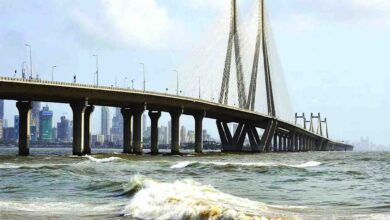India’s Blue Economy: Powering a new era of clean, inclusive, global seafood leadership

GUEST COLUMN
 Shaji Baby John
Shaji Baby John
India’s fisheries sector is evolving into a force that drives nutritional security, rural prosperity, women’s empowerment, and sustainable exports. With the right mix of policy, innovation, and international collaboration—especially with Gulf partners like the UAE—India is not just aiming for the top in fish production, but to lead the world in high-quality, antibiotic-free, sustainable seafood.
At a recent review, Prime Minister Narendra Modi emphasised India’s commitment to transforming fisheries into a pillar of the Blue Economy—not just with big numbers, but with global standards and local empowerment and advocated use of smart technologies to propel India’s blue economy to be future ready..
From traditional fishers to new-age aquapreneurs, the sector supports over 2.8 crore Indians, many in rural and coastal belts. Women and youth play a growing role, and the government is ensuring they get both recognition and resources.
Launched in 2020 with a budget of Rs 20,050 crore, the Pradhan Mantri Matsya Sampada Yojana (PMMSY) is India’s flagship scheme for modernizing aquaculture, boosting exports, and ensuring traceable, safe fish products. Youth and women-specific subsidies under PMMSY include 40–60 per cent subsidy for setting up hatcheries, nurseries, biofloc/RAS units, 60 per cent subsidy for ST/SC/Women beneficiaries ( 40 pre cent for general category), 60 per cent subsidy for ornamental fish units by women/youth entrepreneurs, up to Rs 50 lakh support for establishing cold storage, feed mills, and fish retail kiosks by SHGs and start-ups and skill training programmes with full cost borne by the government.
This is not just aquaculture—it’s a shift to a clean, tech-driven, profitable seafood economy.
FIDF: Building the backbone of quality
The Fisheries and Aquaculture Infrastructure Development Fund (FIDF), with an allocation of Rs 7,522 crore, addresses long-neglected infrastructure gaps. Projects worth Rs 5,588 crore have already been approved for:
· Modern fish landing centres
· Cold chains, ice plants, and processing hubs
· Smart Harbours that ensure hygiene and safe handling
These upgrades benefit over 3.3 lakh fishers while also making Indian seafood more competitive in global markets. Women’s cooperatives and FPOs can access up to 90 per cent project finance through FIDF at concessional interest, in partnership with NABARD and NCDC.
PM-MKSSY & KCC: Financial power in women’s hands
The Pradhan Mantri Matsya Kisan Samridhi Sah-Yojana (PM-MKSSY)—a sub-scheme of PMMSY with Rs 6,000 crore (FY 2023–27)—focuses on formalising the sector and improving credit access.
Benefits include:
· Digital self-registration on a national database
· Access to institutional finance at 4–7 per cent interest
· Up to Rs 2 lakh in working capital via Kisan Credit Cards (KCC)
· Subsidised insurance for aquaculture loss or disease
· Cash incentives for adopting safe, antibiotic-free practices
· Women SHGs, youth start-ups, and smallholder fishers can access these schemes to upgrade operations, reduce debt, and participate in the formal economy.
Empowering women and youth: On the frontlines of reform
Fisheries development now centers on women and young entrepreneurs through:
· Direct scheme targeting (60% subsidy across categories)
· Priority in training, skilling, and startup support
· Integration into value chains (cleaning, processing, retail, logistics)
SHGs are supported to build collective marketing models, allowing women to bypass middlemen and access better pricing.
Sustainability: From policy to practice
India’s seafood strategy is deeply rooted in climate resilience and sustainability. With the help of institutions like CMFRI and CIFT, India is investing in:
· Marine biodiversity protection
· Harvesting mesopelagic species sustainably
· Reducing antibiotic use in aquaculture
· Eco-labels and certification for export readiness
· Climate-resilient pond designs and feed innovations
Environmental integrity is now a passport to global market access, especially in Europe, Japan, and the US.
India-UAE and the Gulf: Anchoring regional blue growth
India is actively partnering with UAE and Gulf nations to build a regional seafood corridor focused on food security, traceability, and value-added trade.
Highlights:
· Bilateral investments in processing hubs, cold logistics, and hatcheries
· Protocols for antibiotic-free compliance and digital traceability
· UAE-India CEPA framework expanding seafood trade opportunities
· Joint research on disease-free, climate-smart aquaculture
Gulf nations rely on imports for over 80 per cent of seafood. India’s proximity, scale, and quality standards position it as the region’s most reliable partner.
India’s Edge: Clean protein for a changing world
Consumers globally are demanding clean, safe, antibiotic-free protein. India’s production ecosystem—fuelled by policy and science—is ready to lead.
What sets India apart:
· Biosecure hatcheries and SPF broodstock
· Government-subsidized traceability adoption
· Expanding cold-chain networks and modern ports
· Clear environmental and health protocols
With all this in place, India is not just building scale—it’s building trust.
Call to Action: From vision to reality
The time to act is now. India’s roadmap is clear, the schemes are in place, and the global opportunity is wide open. To fulfill the vision of our Hon’ble Prime Minister, every stakeholder—from traditional fishers to young entrepreneurs, from women’s SHGs to export houses—must fully utilise these transformative government schemes.
Let us seize this moment to:
· Modernise operations
· Embrace sustainable practices
· Tap into subsidies and credit
· Expand into regional and global markets
· Make “Safe, Sustainable, Made-in-India Seafood” a global gold standard
Together, we can propel India into undisputed global leadership in the Blue Economy—not just in volumes, but in value, safety, and sustainability.
(The author is the chairman and managing director of Kings Infra Ventures Limited; views expressed are personal)






